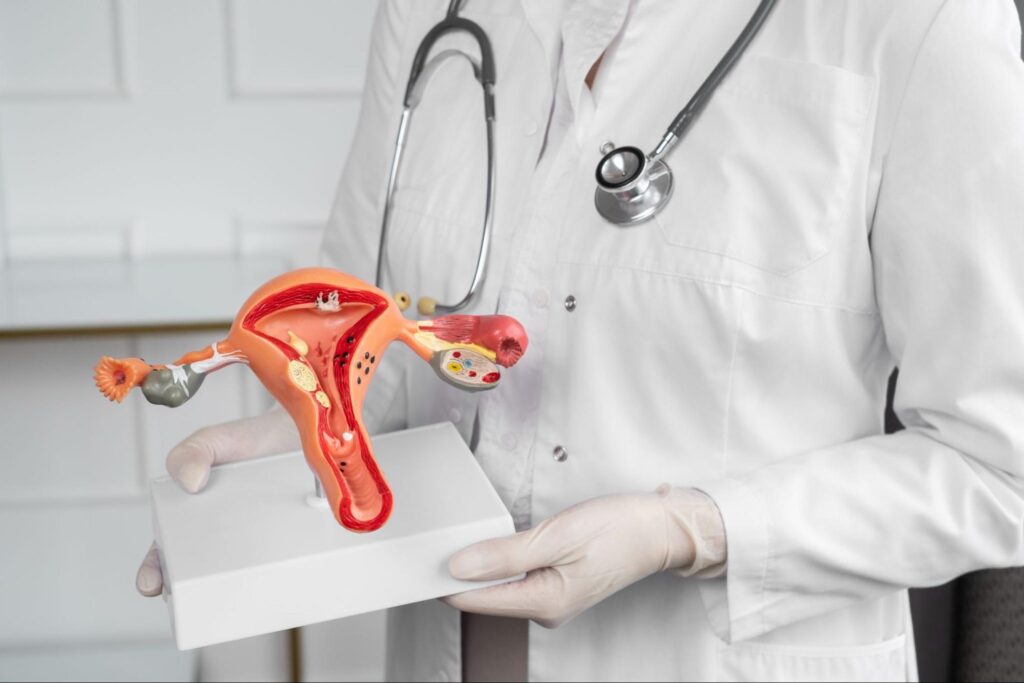
Myomectomy is a specialized surgical procedure aimed at removing uterine fibroids, also known as leiomyomas. These noncancerous growths develop within the uterus and are most prevalent during a woman’s childbearing years. A myomectomy focuses on excising only the fibroids, thereby preserving the uterus and maintaining fertility potential.
Myomectomy plays a significant role in addressing symptoms caused by fibroids, which can include heavy menstrual bleeding, pelvic pressure, and pain during intercourse. For women experiencing severe discomfort or complications from these symptoms, myomectomy offers a targeted treatment option, enhancing their quality of life by alleviating bothersome issues. It is commonly recommended for women who have fibroids affecting their health and wish to preserve their reproductive capabilities.
Types of Myomectomy Procedures
Myomectomy utilizes several techniques, each tailored to the size, number, and location of fibroids. The primary types include:
- Laparoscopic Myomectomy: This minimally invasive technique involves small incisions in the abdomen, making it suitable for smaller fibroids. It offers faster recovery times and less postoperative pain.
- Abdominal Myomectomy: This open approach provides direct access to large or multiple fibroids through a larger abdominal incision, making it effective but associated with longer recovery times.
- Hysteroscopic Myomectomy: This method targets submucosal fibroids using a device inserted through the vagina, eliminating the need for external incisions. It typically results in minimal recovery time.
Each type presents unique benefits and risks, making it critical for patients to consult with their healthcare providers to choose the most suitable option.
Indications for Myomectomy
Myomectomy is primarily indicated for women with symptomatic uterine fibroids. Key reasons for considering this procedure include:
- Heavy Menstrual Bleeding: Women with menorrhagia linked to fibroids may benefit from the removal of the growths to alleviate symptoms.
- Pelvic Pain and Pressure: Chronic pain or pressure caused by fibroids can warrant surgical intervention to improve quality of life.
- Impact on Reproductive Function: For women facing infertility or recurrent miscarriages associated with fibroids, myomectomy can enhance their chances of successful pregnancy.
- Patient Preference: Women who wish to retain their uterus for personal or health reasons can find myomectomy a favorable option.
In conclusion, myomectomy is a vital surgical choice for managing the complications of uterine fibroids while preserving reproductive health. Understanding the procedure and its implications enables patients to make informed decisions about their treatment options.
Preparing for Myomectomy

Before undergoing myomectomy, patients must follow specific steps to ensure proper preparation for the surgery. Firstly, fasting is often required; patients must stop eating or drinking before the procedure, as advised by their doctors. Medication management is crucial; all current medications, including over-the-counter drugs and supplements, should be discussed with the healthcare provider.
For those with anemia resulting from heavy menstrual periods, iron supplements may be recommended to improve blood count. Additionally, hormonal treatments like GnRH agonists might be prescribed to reduce menstrual flow. Evaluating medical history, discussing allergies, and avoiding certain substances are essential preparations. You may also need to make lifestyle adjustments, such as stopping smoking or reducing alcohol intake.
By adequately preparing for your myomectomy, you minimize potential complications and enhance your surgical outcomes. These steps collectively improve the surgical experience and recovery process in the long term.
Risks and Complications of Myomectomy
Potential risks and complications of myomectomy must be thoroughly considered. Blood loss is a significant concern, especially for patients with existing anemia. To mitigate this risk, pre-surgery treatments like iron supplements are advisable. Moreover, patients are informed about scar tissue development due to uterine incisions, which can lead to adhesions.
Myomectomy might also pose risks during subsequent pregnancies, including complications during childbirth, particularly if a deep uterine incision was made. Rarely, emergency hysterectomy may become necessary if bleeding is uncontrollable or anomalies arise.
Strategies to reduce these risks include thorough pre-surgery evaluations and controlled blood management. Discussing the specifics of the surgery with the healthcare provider is essential for understanding these risks and making informed decisions.
Recovery After Myomectomy
The recovery after myomectomy typically occurs in stages. Immediately post-surgery, patients may need to stay in the hospital for one to two days. Short-term recovery can involve vaginal spotting, with a full return to normal activities generally seen within two to six weeks. Full recovery may take up to three months, depending on the surgical approach.
In terms of body changes, many women experience relief from prior symptoms like excessive bleeding. However, there is a potential for new issues, such as scar tissue leading to complications if a pregnancy occurs post-surgery.
Post-operative care is also vital. Patients should adhere to their follow-up appointments to monitor recovery, manage any complications, and address any emerging fibroids. Emphasizing both physical and emotional health is crucial, as patients may experience various feelings during recovery.
Conclusion of Myomectomy
Myomectomy offers a promising surgical solution for women dealing with symptomatic uterine fibroids, targeting noncancerous growths while preserving the uterus and fertility. This procedure effectively addresses heavy menstrual bleeding, pelvic pain, and pressure, while enhancing quality of life and reproductive health.
With several techniques available—laparoscopic, abdominal, and hysteroscopic myomectomy—patients can select the most suitable option based on their condition. Comprehensive pre-surgery preparation and awareness of potential risks, such as blood loss and scar adhesions, are crucial.
The recovery stage, typically extending up to three months, culminates in notable symptom relief and favorable fertility outcomes. Continuous research is vital to advance myomectomy techniques, minimizing fibroid recurrence and enhancing surgical safety.
